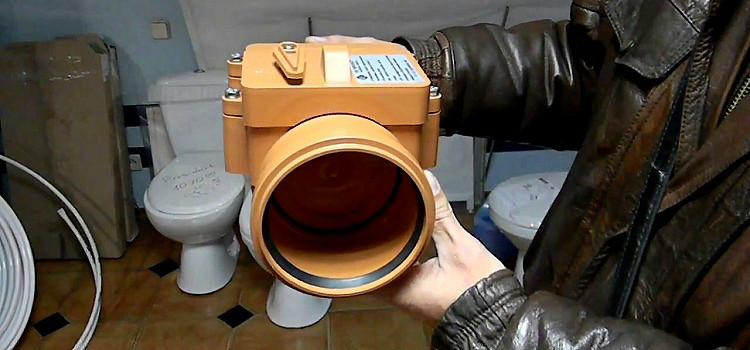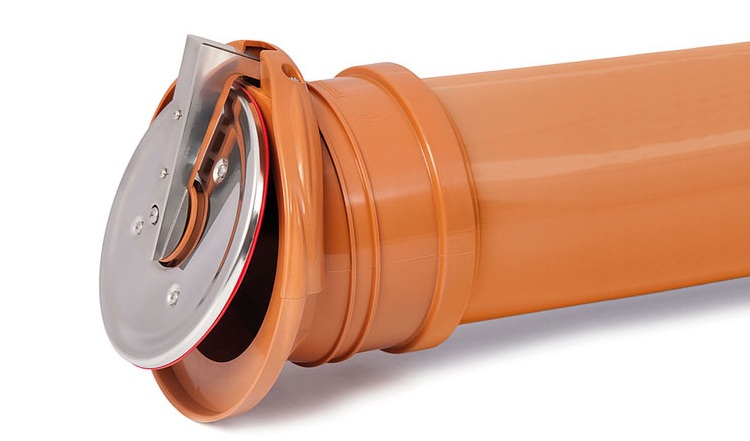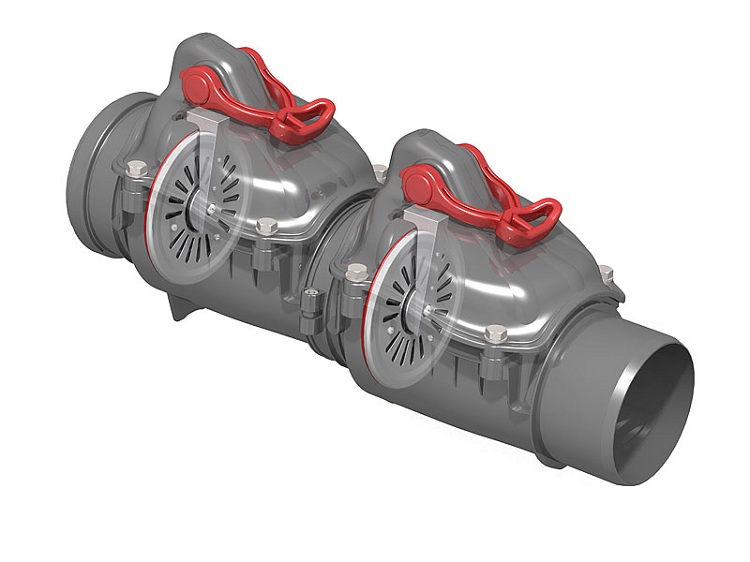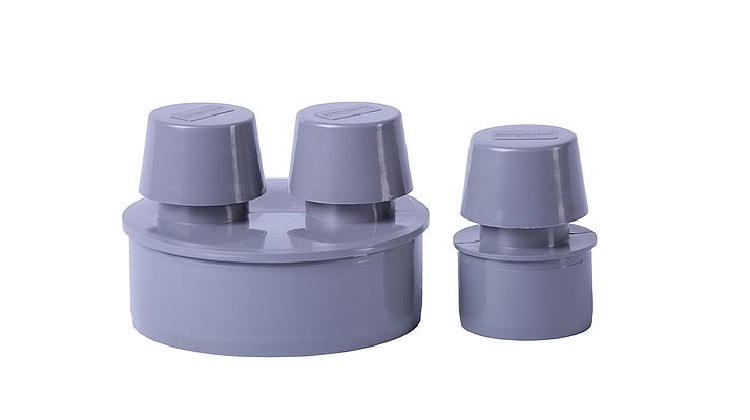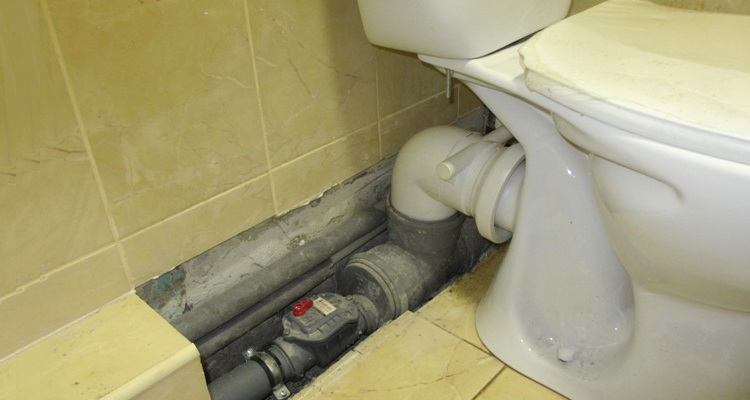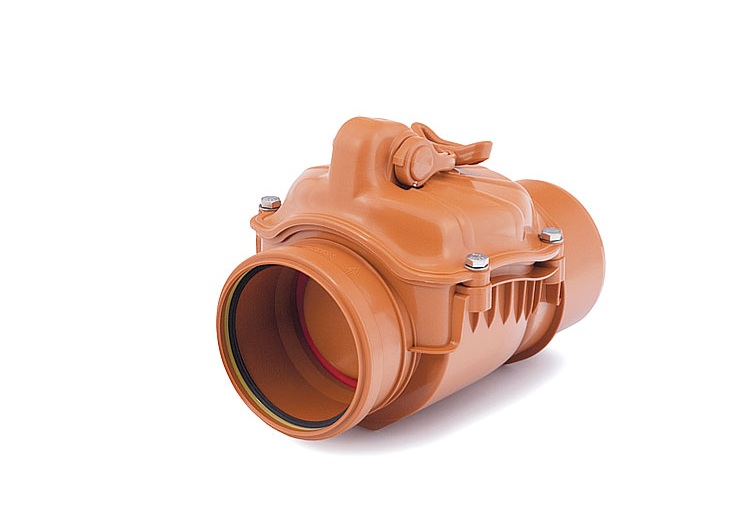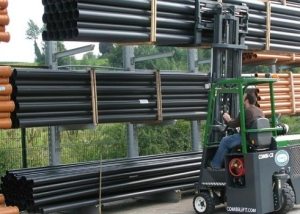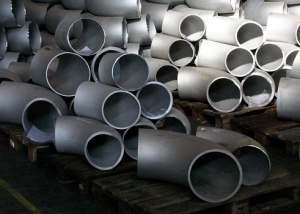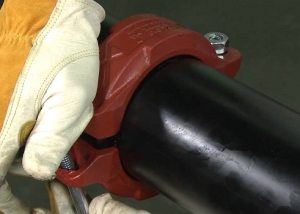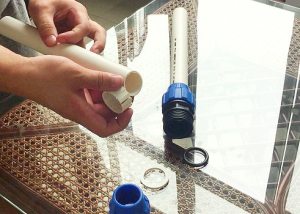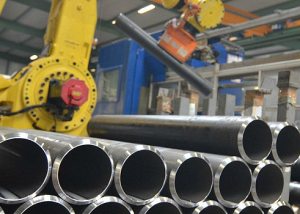The air sewer valve is a device that prevents the appearance of unpleasant odors in rooms, and also eliminates extraneous sounds in the drainage system. In fact, this device creates a barrier and prevents sewer gases from moving in the opposite direction. Such devices are very popular in private and multi-apartment buildings. Especially the vacuum sewer valve is useful in cases where various types of emergency situations often occur in the sewer system.
Content
- 1 What is an air valve for?
- 2 Advantages and disadvantages of the device
- 3 The device and principle of operation
- 4 Varieties by design features
- 5 Varieties of valves according to the method of action, the variant of location and installation
- 6 Main technical characteristics of aerators
- 7 Features of installation of aerators in apartments and private houses
- 8 The main stages of installation
What is an air valve for?
Sewer ventilation valves or aerators perform compensatory functions - equalize the pressure in the sewer during its surges.
During the construction of buildings, problems with smells are solved quite simply - the sewer riser is displayed on the roof. However, over time, such a design can for one reason or another fail, and then the water in the sewer will begin to move in the opposite direction, which is fraught with fountains from the toilet and an unpleasant odor.
The screen, which is part of the aerator, controls the movement of wastewater and, if necessary, blocks the system so that sewer gases and sewage do not enter the room. When the emergency is behind and the pressure in the system returns to normal, the vent valve for drainage removes the screen.
This is an incredibly useful device, the installation of which is able to save the residents of an apartment or private house from troubles. This device only works in cases where pressure drops caused by various factors occur in the system.
Advantages and disadvantages of the device
The main advantages of using a vacuum valve include:
- prevention of emergency situations and isolation of premises from the penetration of sewer gases and water;
- the use of a valve allows you to do without installing a fan (ventilation) pipe. The fan pipe is displayed on the roof, which means that you will not have to make an extra hole in the roof and perform quite complicated work.
Helpful information! It is allowed to install the aerator on an already ventilated system. The use of such a device is considered an additional precaution.
The main disadvantage of such a device is jamming. Over time, the functional parts of the valve age, wear out or become clogged. Clogging of the valve is quite rare, since getting debris into the structure without violating its integrity is almost impossible. But the wear of the structural elements of the device over time is inevitable, which can lead to a deterioration in the mobility of the valve membrane.
The device and principle of operation
Sewer ventilation valve from the following structural parts:
- housing;
- stock;
- tight gasket;
- cover (shutter).
As already mentioned above, the aerator is used to equalize the negative pressure in the sewer structure. The main reason for the appearance of negative (rarefied) pressure in the system is the discharge of water in large quantities. This happens when:
- pouring water into the toilet;
- the descent of the toilet.
When water is discharged, a rather large volume of air is carried away with it, thereby violating the pressure in the system. If the network has a vent exit to the roof, then this situation is solved very simply: excess air is discharged through the roof and the pressure in the system stabilizes.
However, in some cases, the fan pipe may fail and then an emergency situation may occur. The air enters through the fan riser in insufficient volume, which entails a violation of the sewage system. It is in this way that an unpleasant smell appears.
The lack of air in the sewer structure causes the shutter (even the most unreliable) to break down and water plugs in the toilet, sinks, and bathtub are sucked into the sewer, opening the way for gases. It is for such unforeseen situations that an aerator is needed that perfectly copes with its tasks.
Note! Penetration of sewage gases is not only unpleasant, but also dangerous to human health, as they may contain pathogenic bacteria, fungi and other harmful microorganisms. An air valve installed on time will prevent such an emergency and will preserve your health.
The vacuum valve for sewage has the following working principle: a membrane is included in its design, which at normal pressure in the system is tightly pressed against the device body. As soon as negative pressure appears in the network (when draining the water), the membrane rises in the direction from the premises into the sewer. Then excess air is removed and the pressure returns to normal. In such a situation, everything happens in a matter of seconds and the failure of the water shutter in the toilet becomes impossible.
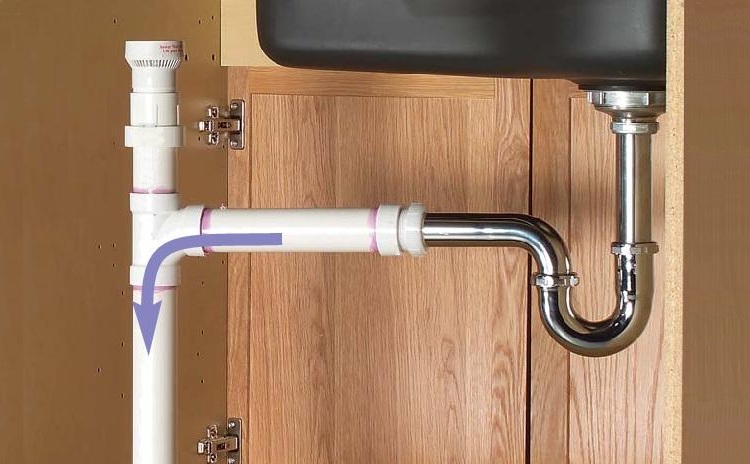
Thanks to the valve, the drains flow out of the system without hindrance, and the risk of failure of the valve is reduced to zero
Varieties by design features
Design features and options for using valves divide them into the following types:
- membrane;
- cylindrical;
- lever.
Membrane Made of PVC. Most often they are mounted at the ventilation inlet of the sewer structure. If there is a sharp pressure drop in the system, such a membrane reacts with lightning speed and changes its position, which allows you to equalize the pressure and avoid the breakdown of water barriers. The operation of such a valve provides for the access of air from the fan pipe.
Cylindrical. Such devices are made of metal (the most common are steel). In appearance, these valves resemble a stopcock. The cylindrical device includes a threaded housing and a cover. The most common diameter that is used is 110 mm, however, other options are used, albeit much less often.
The pressure that acts on the cover changes its position, as a result of which the wastewater opens up. With the disappearance of pressure, the cover takes on its original position. It opens in the direction of the sewer. Specialists advise using such valves in private homes.
Lever This type of valve is used in sewer structures in which there is no ventilation. It is worth noting that such a device needs manual adjustment. The composition of such a valve includes the following structural elements: a metal casing, a steel lever. Wastewater flows in the direction indicated by the arrow.
Varieties of valves according to the method of action, the variant of location and installation
According to the mode of action, all air valves are divided into three main types:
- Kinetic. This type of valve is also called anti-vacuum. It can carry out work only at low pressure indicators in the sewer system. The kinetic air sewer valve removes excess air when the system is excessively filled with water or air.
- Auto. The main function of this valve is the removal of excess air under pressure in the sewer structure. Such a device does not differ in high power, but for a small private house it is quite enough.
- Combined. From the name it becomes clear that this model combines the previous two principles of action.
In addition, depending on the location (horizontally or vertically) and the dimensions of the cross-section of the device, all air sewer valves are divided into:
- ball;
- interflange;
- reception room;
- back.
Ball. A ventilation valve for this type of sewer is installed on horizontal pipe sections. Installation is made on pipes of small diameter. The role of the shutter in such a valve is performed by a ball part.
Wafer. Compact device that can be mounted horizontally and vertically. Such devices are divided into walk-through and corner. Through-wafer devices pass the medium through themselves without changing the direction of its current, and the angled ones redirect the fluid flow by 90 °. In addition, according to their design features, they are divided into spring disk (from 1.5 to 20 cm) and bivalve (from 5 to 70 cm).
Reception The diameter of such a device is 200 mm. It is equipped with a filter that collects solid particles on itself, protecting the system from clogging. Installation of this type of valve is carried out in front of the pump apparatus in horizontal structures.
Back. The locking element in such a device is represented by a slide valve, which closes if the pressure in the system decreases. Such valves can be quite large diameters. Check sewer valves are divided into two types:
- simple;
- unstressed.
Simple ones differ in cross-section up to 400 mm and have a significant drawback: during the operation of a simple non-return valve, the shutter beats quite strongly against the seat. This leads to breakdowns of such devices and the occurrence of water hammer in the system.
Shock-free models are equipped with a special element - a damper. Damper dampens too strong impacts, which allows you to use it without fear in any design. Installing a non-return valve in the sewer system is recommended if the system is under high pressure.
Focusing on discrepancies during installation, we can distinguish the following valve options:
- threaded;
- flanged;
- coupling.
Main technical characteristics of aerators
Masters distinguish 2 main technical characteristics of air valves:
- diameter;
- bandwidth.
Diameter indicators can be: 50, 75 and 110 mm. Fifty-millimeter parts are ideally suited for installation on individual plumbing fixtures, as are valves with a cross section of 75 mm. But products with a diameter of 110 mm are needed for installation on a sewer riser, as they can withstand more pressure.
Important! For mounting on pipes that have a different diameter, there are special adapters. In addition, some modern models are equipped with multi-stage nozzles. Thanks to these pipes, vacuum sewer valves can be connected to pipes with different diameters (for example, 32 mm).
The throughput of these devices can range from 7 to 47 l / s, depending on the model.But as a rule, most devices pass from 32 to 47 l / s.
Features of installation of aerators in apartments and private houses
For apartments and private houses, there are some differences in the installation of the aerator. The place of its installation depends on a number of factors, which we will consider below.
In the apartment
Installation of an air valve on the sewer in an apartment is often performed on a riser. In addition, the installation can be both in the section of the pipe, and in a separate section. When installing the aerator, you need to remember that for convenience you can mount the transition element on the old pipe, and only then the valve. Such an installation will solve the problem only in your area. The remaining floors will not be affected.
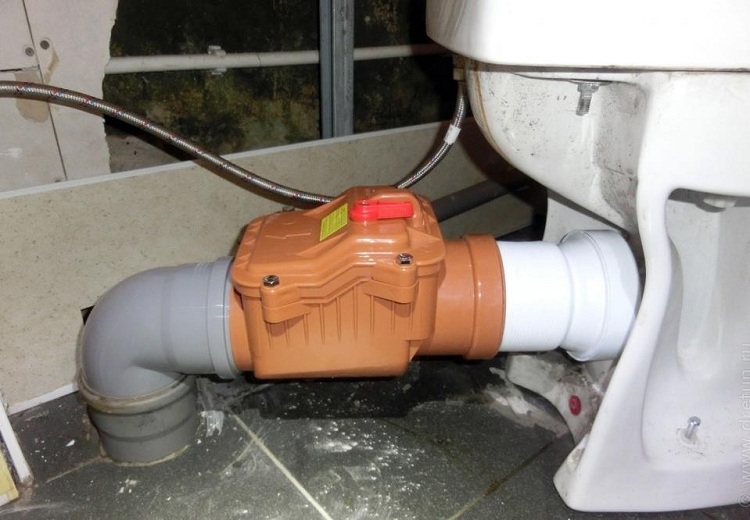
In the apartment, the air valve can be placed not only on the riser, but also on any part of the system
In a private house
In the house, the installation of the aerator is most often performed on the main riser, which has a roof outlet (this is a ventilation pipe). If your site is equipped with a septic tank, then installation of an aerator is necessary. This is necessary so that bacteria receive oxygen. The fan pipe can be brought to the attic and equipped with a sewer valve, however, experts do not encourage such a design, because there will be no ventilation of the riser.
The most suitable option is the withdrawal of the fan pipe through the roof. Many do not want to do this because of the complexity of the procedure or the reluctance to get extra holes in the roof. However, this design is considered optimal.
Note! In the process of warming the sewer pipe, it is strictly forbidden to heat the aerator with it. This is contrary to building codes and regulations (SNiP).
Consider the options when installing aerators is necessary:
- In multi-storey buildings that are connected to treatment facilities.
- For the area within which sewage is discharged.
- In designs excluding the vertical arrangement of the device.
The main stages of installation
If the installation of the device is carried out in a multi-storey building, it is imperative to inform the neighbors, because water will disappear in the pipes during the closure of the riser.
The main stages of installation of the aerator include:
- First, you need to dismantle the sewer section on which the aerator will be installed.
- The valve with a sealing ring is joined with a tee or other adapter (installation can take place without them - right on the pipe). The arrow on the valve is marked for convenience and should indicate the direction of movement of the medium in the system. There must be a minimum of 30 cm from the valve to the pipe inlet to the plumbing fixture, and the distance to the nearest siphon must be at least 20 cm.
- At the last stage, we mount the valve on the sewer pipe.
A sewer valve is a necessary and useful device that stabilizes the operation of the system and prevents emergency situations. Its installation is possible in any type of room, you just need to choose the right type of structure.
